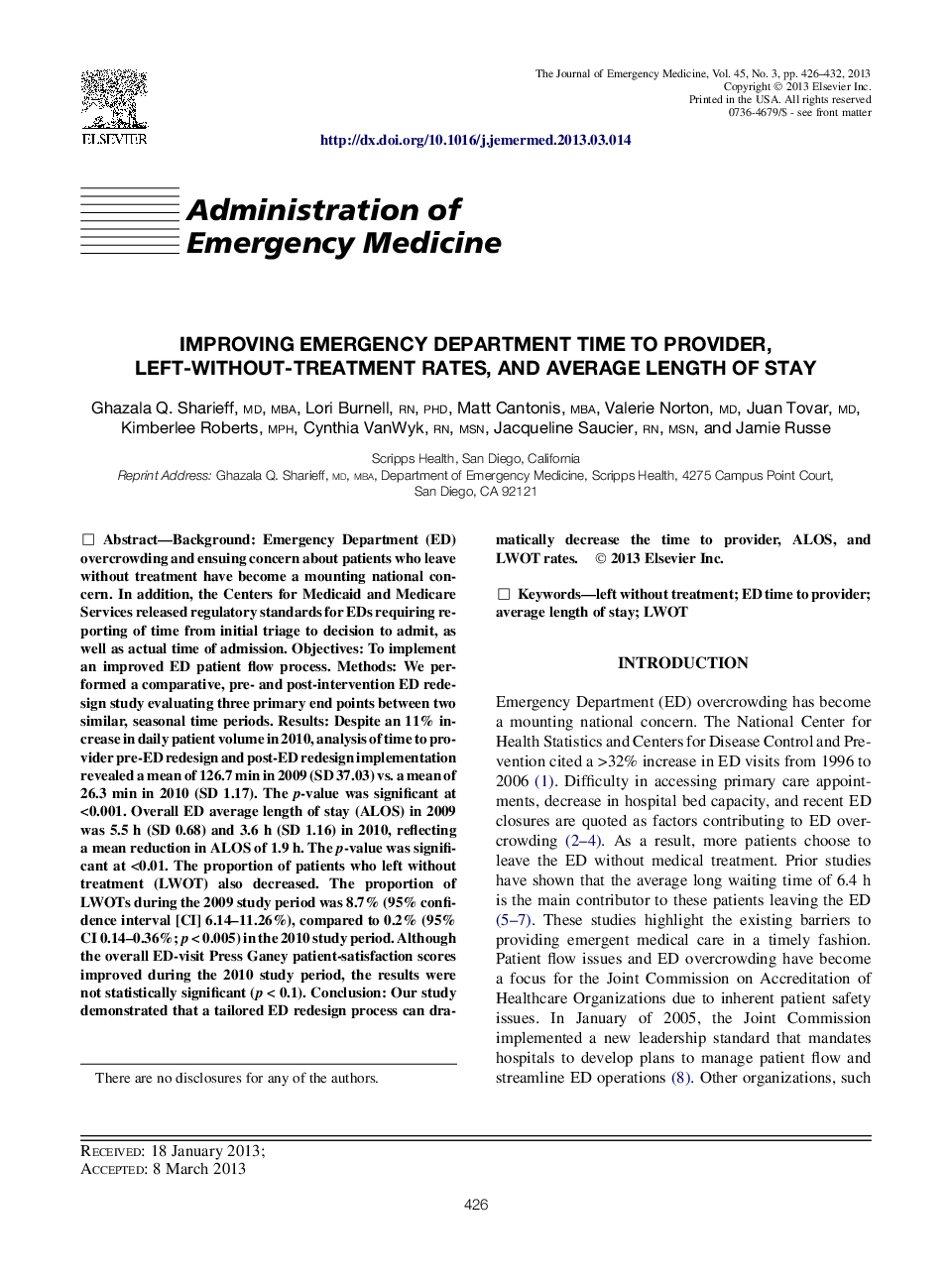| Article ID | Journal | Published Year | Pages | File Type |
|---|---|---|---|---|
| 6085518 | The Journal of Emergency Medicine | 2013 | 7 Pages |
BackgroundEmergency Department (ED) overcrowding and ensuing concern about patients who leave without treatment have become a mounting national concern. In addition, the Centers for Medicaid and Medicare Services released regulatory standards for EDs requiring reporting of time from initial triage to decision to admit, as well as actual time of admission.ObjectivesTo implement an improved ED patient flow process.MethodsWe performed a comparative, pre- and post-intervention ED redesign study evaluating three primary end points between two similar, seasonal time periods.ResultsDespite an 11% increase in daily patient volume in 2010, analysis of time to provider pre-ED redesign and post-ED redesign implementation revealed a mean of 126.7 min in 2009 (SD 37.03) vs. a mean of 26.3 min in 2010 (SD 1.17). The p-value was significant at <0.001. Overall ED average length of stay (ALOS) in 2009 was 5.5 h (SD 0.68) and 3.6 h (SD 1.16) in 2010, reflecting a mean reduction in ALOS of 1.9 h. The p-value was significant at <0.01. The proportion of patients who left without treatment (LWOT) also decreased. The proportion of LWOTs during the 2009 study period was 8.7% (95% confidence interval [CI] 6.14-11.26%), compared to 0.2% (95% CI 0.14-0.36%; p < 0.005) in the 2010 study period. Although the overall ED-visit Press Ganey patient-satisfaction scores improved during the 2010 study period, the results were not statistically significant (p < 0.1).ConclusionOur study demonstrated that a tailored ED redesign process can dramatically decrease the time to provider, ALOS, and LWOT rates.
